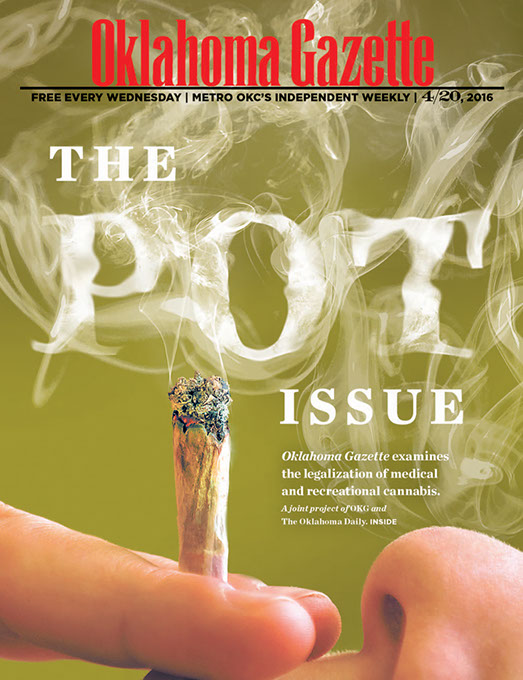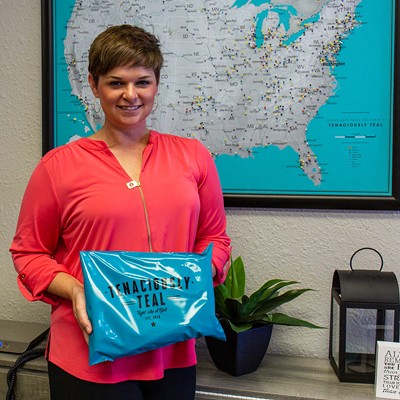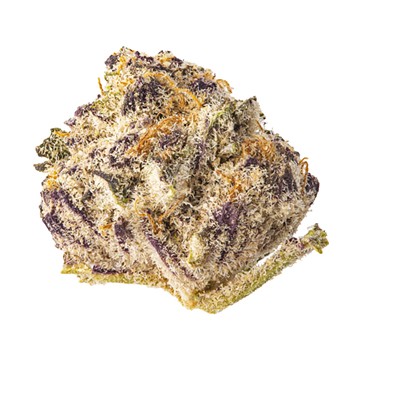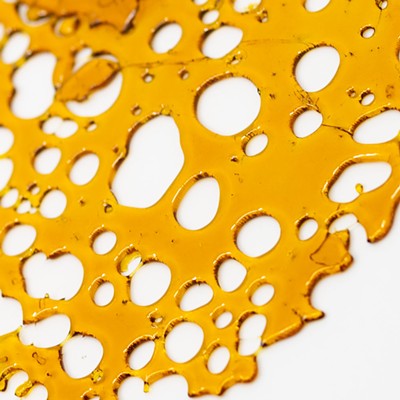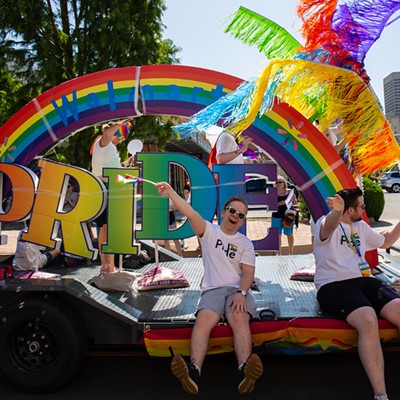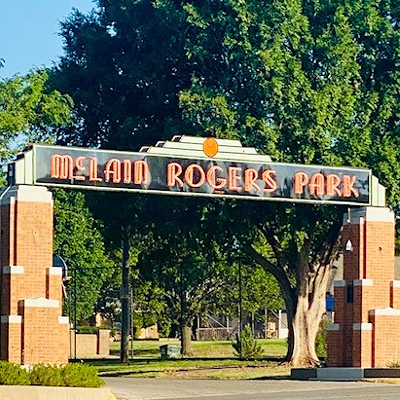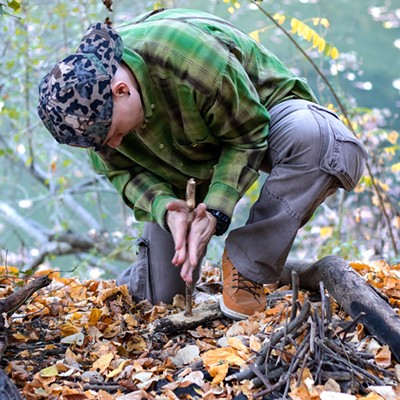Read more of Oklahoma Gazette's special 420 coverage at okgazette.com.
In October 2014, Department of Justice director Monty Wilkinson released a three-page memo regarding policies surrounding the Controlled Substances Act as it relates to Native American tribes. The “Wilkinson memo” states that priorities in an earlier memorandum “will guide United States Attorneys’ marijuana enforcement efforts in Indian Country, including in the event that sovereign Indian Nations seek to legalize the cultivation or use of marijuana in Indian Country.”
By many, the memo was seen as a signal that marijuana was legal to sell on Native American land; tribes began investing in marijuana productions, and reservations planned pot resorts. However, it was not long before some of those same tribes were burning their crops and closing down operations for fear of government prosecution.
Lael Echo-Hawk, who is Pawnee, is general counsel to National Indian Cannabis Coalition. She has been advising tribal leaders on subjects regarding the process of financing, designing and constructing marijuana cultivation and manufacturing enterprises since legalization began in Washington state in 2012.
Echo-Hawk spoke with Oklahoma Gazette about the issues surrounding marijuana sales and production among tribes in Oklahoma, which will likely become a major issue in coming months. Oklahoma has one of the highest Native American populations in the country, second only to California.
Sparking interest
Echo-Hawk said only two tribes have opened small retail shops in the country, and they are both in Washington state. She sees this as an indication of how tribes interpret the memo. She said the directive gives tribes the freedom to see if their local district attorney desires to enforce drug laws. If the district attorney doesn’t and agrees to leave the tribe alone, marijuana can be sold.
“The problem is that there’s no uniformed standard,” Echo-Hawk said. “All of the regions take a different approach.”
Many Oklahoma politicians are hostile to the concept of allowing marijuana to be sold in the state. Oklahoma Attorney General Scott Pruitt, along with the state of Nebraska, recently attempted to sue Colorado due to its legalized marijuana flowing into neighboring states, claiming it impeded Oklahoma’s and Nebraska’s “sovereign interests” and ability to enforce federal antidrug laws. On March 21, the U.S. Supreme Court refused to hear the case.
Furthermore, U.S. Sen. James Lankford (R-Oklahoma) introduced the KIDs Act (Keeping out Illegal Drugs Act) in the U.S. Senate last year. It would prohibit Native American tribes and tribal organizations from “cultivating, manufacturing or distributing marijuana on Indian lands,” knowingly allowing it to be done or failing to destroy a crop and alert the “appropriate federal official” if an individual or entity is found growing or selling marijuana. Under the proposed KIDs Act, tribes or tribal organizations found in violation would be stripped of all federal benefits agreed to via historic treaties between individual tribes and the U.S. government. Lankford, who serves on the United States Senate Committee on Indian Affairs (BIA), cited his concern for “protecting future generations of Indians from the harmful effects of illegal drugs,” in the act’s language.
“Senator Lankford’s bill is horrific,” Echo-Hawk said. “It’s a termination bill; it’s awful. … I understand he has some personal belief about this issue, but he doesn’t get to decide what tribes do simply because he has an opinion.
“Senator Daniel Inouye, who was a very powerful politician from Hawaii, would always say that he was personally opposed to gambling, but that it was for tribes to decide what to do, not for him. Senator Lankford should take a cue from that.”
An Oklahoma Gazette contributing reporter contacted Sen. Lankford’s office for a comment about the proposed bill for this story. It sent a press release about the bill dated Aug. 6, 2015.
“Last time I looked, the KIDs Act didn’t have any cosponsors,” Echo-Hawk said. “I think he was trying to send a message to tribes in Oklahoma, frankly, that Oklahoma is not going to support this kind of initiative.”
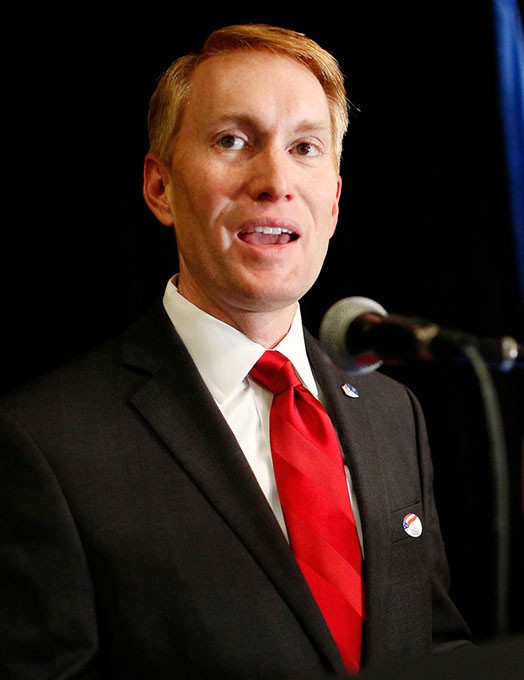
New world?
Most agree that the idea of a Native American tribe opening a marijuana operation in a state where it is illegal is not a smart one and likely won’t happen.
But while all this is going on, Oklahomans for Health, the grassroots organization with the goal of getting medical marijuana to a public vote on November’s ballot, is preparing a signature petition. Based on previous experience with its 2014 petition drive, the organization believes it can easily get the needed signatures to add it to the ballot. It is possible that medical marijuana could be legal in Oklahoma by the end of the year.
“There is definitely economic opportunity in the industry,” Echo-Hawk said. “If you look at Colorado, in 2014, they made $700 million in sales. The state made $70 million in taxes. For 2015, it looks to be almost double; it’s a lot of money.”
She points to hemp production as another way to encourage economic development for tribes, which many agricultural organizations — including American Farmers & Ranchers in Oklahoma City — are now in favor of allowing. There is a high demand for hemp products in the U.S. Even though it is cannabis fiber with no psychoactive properties, hemp farming was also outlawed in 1970 under the federal Controlled Substances Act (CSA).
“The only way to grow hemp under the law is under the umbrella of the 2014 farm bill, which allows institutions of higher learning and resource institutes to grow hemp,” she said. “The Menominee tribe tried to do this up in Wisconsin, and the DEA came in and burned their stuff to the ground.”
“[The tribe is in litigation with the U.S. Department of Justice] because the DEA, the state and the BIA said the tribal college is not an institute of higher learning for the purposes of the farm bill, which is total nonsense,” Echo-Hawk said. “Tribes are being treated quite a bit differently than the rest of the country when it comes to this issue.”
A part of Echo-Hawk’s job is talking to congressional members, administrations and district attorneys as well as the U.S. Department of Agriculture, Indian Health Service (IHS) and Bureau of Indian Affairs.
“They are all making policies. They are all trying to figure out how to handle this issue,” she said. “We are trying to make sure the tribes don’t lose their federal funding if they decided to engage in the industry.”
Every time a tribe accepts federal funding for self-governance, it agrees not to violate federal law, Echo-Hawk said.
“There’s no two ways about it; if you engage in the sale, manufacture or production of cannabis, as it is defined by the CSA, it is a violation of federal law. A lot of tribes are hesitant because of that,” she said. “Other tribes are hesitant because they know they are in a district where you have a district attorney who is tough on crime and who is not going to tell them to go ahead. And usually those are the states that don’t have legalization; Oklahoma is one of them. In the middle of the Bible Belt down there, I think it would be a costly mistake to engage in that.”
Gaming was not fully illegal in the U.S., Echo-Hawk noted; there were rules and regulations on how to go about it when tribes began operating casinos. However, marijuana distribution is still a federal crime.
“If you are a truck driver driving in production equipment for a hydroponic grow operation, you could go to jail for possession of paraphernalia with the intent to manufacture and distribute,” she said. “If it is over a certain amount, which isn’t very much, you can get a lifetime sentence. There’s a ton of risk involved, and mitigating the risk is one of the things I have been talking to tribes about. We go through all the scenarios.”
The tribes in Washington have entered into compacts, or agreements, with the state. Echo-Hawk said she was leery at first, but once she realized what they gained, she could see the future for other tribes’ marijuana operations.
“The problem was Washington state had already locked down their system. To buy into the system, you had to be licensed by the state, so the tribes entered into these compacts,” she explained.
Tribes made concessions, she said. But if the legality is challenged, the state agrees to co-defend any challenge against the tribe.
“So you have tribes now that have locked arms with the states,” Echo-Hawk said. “That’s how they’ve backstopped the issue of how to protect themselves.”
The most logical reason for tribes to get into the marijuana business is the vast amount of unutilized farmland in Indian country, including some in Oklahoma. Much of it was leased out decades ago. As those leases expire, a lot of farmland reverts back to tribes or individual tribal members that are trying to figure out what to do with it.
The irony that the historic policy of the government was to reeducate Native Americans so they would turn to farming rather than hunting for survival is not lost on Echo-Hawk.
“Over the next 10 years, we’re going see marijuana descheduled and we’re going to see hemp farms everywhere,” Echo-Hawk predicted, saying it could be the second highest-grossing crop per year, behind tobacco.
“If you think about how much agricultural land tribes have and the fact that the United States government went around trying to dictate to tribes that they become agricultural, it’s important,” she added. “When you combine that with the 2014 farm bill, where the government seemed to say they were just kidding, that tribes could not grow hemp, that’s very hypocritical.”
High-quality cannabidiol (CBD) is made from hemp. CBD is a physiologically inactive form of THC (tetrahydrocannabinol) sometimes used to medically treat ailments such as epilepsy and Parkinson’s disease.
U.S. Patent #6630507, “Cannabinoids as antioxidants and neuroprotectants,” was filed by the U.S. Department of Health and Human Services. The patent claims medical value contrary to the U.S. Drug Enforcement Administration’s definition of marijuana (cannabis) as a Schedule I drug “with no currently accepted medical use and a high potential for abuse.”
The National Institutes of Health, an agency of the United States Department of Health and Human Services, signed an exclusive license agreement with privately held Kánnalife Sciences Inc. to commercially develop the government patent. The company announced the agreement in 2012.
“[Kánnalife is studying CBD as a medical treatment] for people who have chronic traumatic encephalopathy (CTE) from concussions, for people who are having the onset of dementia or Alzheimer’s,” Echo-Hawk said. “It is so hypocritical to me that the United States has refused to reschedule even industrial hemp, but on the other hand, they have a license because they understand what amazing medicinal properties this product could have.”
Witnessing results
Echo-Hawk’s sister has epilepsy.
“I’ve given her some CBD products because it helps her sleep. If she sleeps, she doesn’t have grand mal seizures,” she explained.
Her sister’s prescription epilepsy medication gives her insomnia. “CBD oil has been really good for helping her get the rest she needs, but IHS won’t pay for the medication that she needs. So, as a family, we pay for these very expensive drugs. It’s a crazy cycle,” Echo-Hawk said. “People with these health issues could be helped by really exploring the property of medicinal marijuana and the impact of CBD in-depth. Cannabis as a plant, as medicine, there is amazing science behind this. I think it will be life-altering when the real research starts.”
Of course, while gaming was a major boom for many Indian tribes, Echo-Hawk said she believes that medical cannabis will not be as big of an economic boom because Native American tribes won’t be able dominate the market like they did with casinos. However, she believes tribes could still earn a lot of money.
“Even when they have to compact with the state, the tribes have figured out ways to charge lower tax rates. For tribes, it is going to be about creating a product and infrastructure that makes it cheaper and more cost effective for people to come to the reservation to buy it, just like they do for gas and cigarettes. That’s where this is going,” Echo-Hawk said. “Demand is going to be very high at first, until it is saturated, then it will go back down and people will keep going out to the reservation and buying cigarettes, gas and marijuana there because it’s cheaper.”
Learn more about the National Indian Cannabis Coalition at niccdc.org.
Print Headline: Sparking debate, Native American tribes weigh in on legalizing medical and recreational marijuana.


